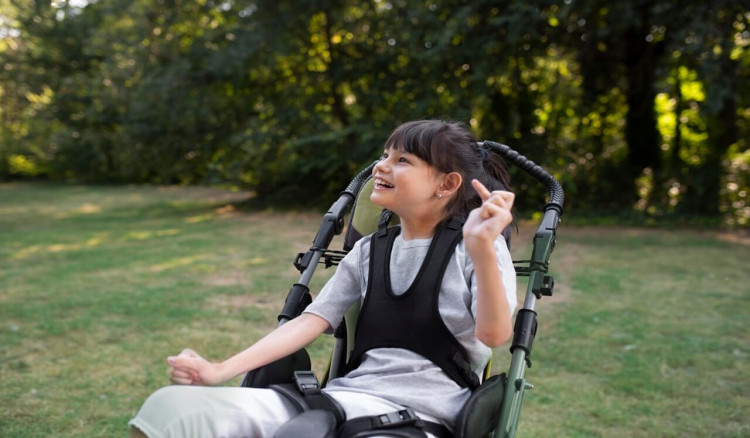
Cerebral Palsy Treatment
Palsy is a term applied to certain types of paralysis as well as to various disorders marked by constant trembling or quivering of some part or parts of the body.
In palsy, the ability to control the voluntary muscles is lost or impaired as a result of an injury or disorder of the brain, the spinal cord or the nerves.
Types of Palsy
There are different types of palsy which can affect anyone and the most common types of palsy are:
Facial Palsy
This is a condition marked by paralysis of the muscles on one side of the face. Facial palsy is a type of Neuritis. It may be caused by a draft, an infection, a tumor, or an injury. Palsy produced by the first two factors clears up in a matter of days or weeks, but more serious kinds require treatment of the underlying cause. This condition is also known as Bell’s palsy.
Shaking Palsy
Palsy is one of the symptoms of parkinsonism. A brain disease, parkinsonism may be the result of hardening of the arteries, a stroke, an injury, certain infections or other conditions. The face is immobile except for to-and-fro tremors of the head; there is trembling of the limbs, and rigidity of the muscles is pronounced. Massage, medication, and other treatments are prescribed.
Chorea
In this disorder the body jerks involuntarily. One special type is Huntington’s Disease, a serious hereditary condition in which the brain deteriorates. Another kind of chorea is Saint Vitus’ dance. It is sometimes associated with Rheumatic Fever in young children. The condition generally subsides in a few weeks.
Cerebral Palsy
This is a non-progressive disability caused by damage to the developing brain, which may occur before, during or after birth.
Typical disabilities include poor muscular coordination, muscular spasms and weakness that interfere with movement, and speech disturbances. The degree of disability varies greatly. In mild cases, the condition may not be noticed until the child is found to have difficulty performing acts normal for a child his age, such as grasping objects or learning to walk.
Typical signs include odd movements of the arms, legs, and head, inability to coordinate movements, tremors, and a stiff ‘scissors’ gait. In severe cases, vision and hearing may be affected and the child may suffer convulsions.
Any of a number of different causes may be responsible for the brain damage associated with cerebral palsy. It may be due to incompatible blood types in the parents, insufficient oxygen before birth, premature birth, injury during birth, diseases such as encephalitis and scarlet fever, or other causes.
In medicine, the term ‘cerebral palsy’ is commonly reserved for the condition caused by damage to a baby around the time of its delivery.
Cerebral palsy is not uncommon; it is estimated that about 17,000,000 persons in the world have the disorder, one-third of whom are under 21. Their life expectancy is as great as the general average. Many persons with cerebral palsy are able to lead normal lives.
Cerebral palsy children frequently have the intelligence of normal children. Because of their condition, however, they may appear subnormal. The child may slobber and grimace or utter incomprehensible sounds. The fact that a child has trouble expressing himself does not mean that he is mentally retarded.
Cerebral Palsy Treatment
Cerebral palsy treatment varies with the degree and type of cerebral palsy. In severe cases, surgery may be used to help some of the physical aspects of the diseases. The convulsions are controlled with phenobarbital or other medications.
Many cases are mild and a reasonably normal life is possible. For the others, a carefully developed program can lead to marked improvement. The emphasis must be placed upon training the child to help himself and building self-confidence. With persistence and encouragement, even serious cases can make remarkable progress.
Physical therapy, aimed especially at the development of the muscles, is important in any program. Speech training may also be needed. Psychological testing is used to determine whether there is any mental retardation and to point the way to a suitable educational program.
Other Types of Palsy
There are numerous other types of palsy. Lead palsy sometimes occur among persons who work with lead; it is marked by paralysis of the wrist muscles. Birth palsy is caused by an injury suffered during a difficult delivery; in one type, brachial palsy, the arm may be paralyzed. A crutch pressing into the armpit may be responsible for crutch palsy, or paralysis of the arm.
Sources and References
Reader’s Digest Family Health Guide and Medical Encyclopedia
Cerebral Palsy: Current Opinions on Definition, Epidemiology, Risk Factors, Classification and Treatment Options by Malgorzata Sadowska, Beata Sarecka-Hujar and Ilona Kopyta
Challenges in The Diagnosis of Parkinson's Disease by Eduardo Tolosa, Alicia Garrido et al






Share This Article: